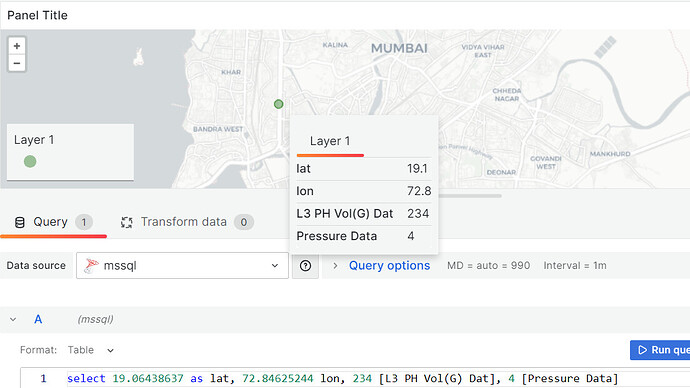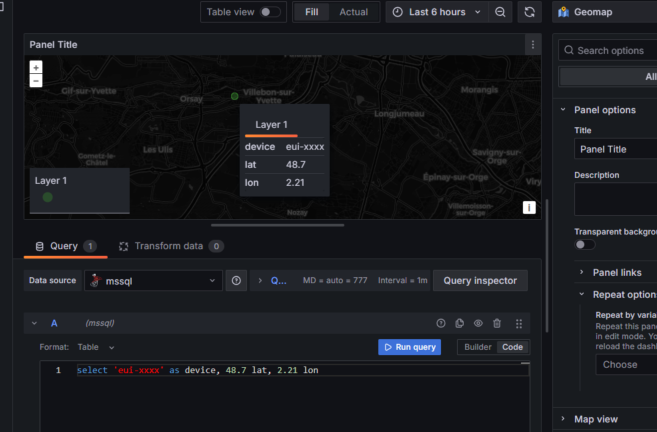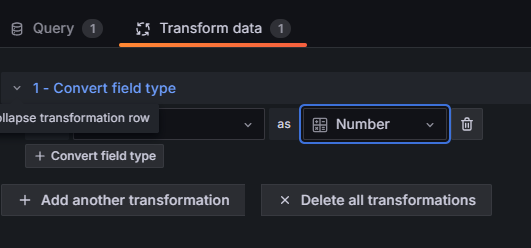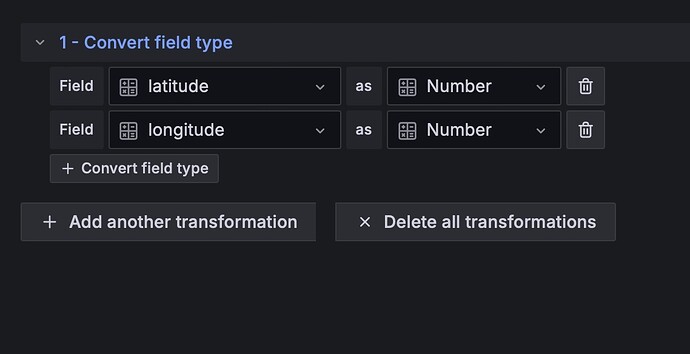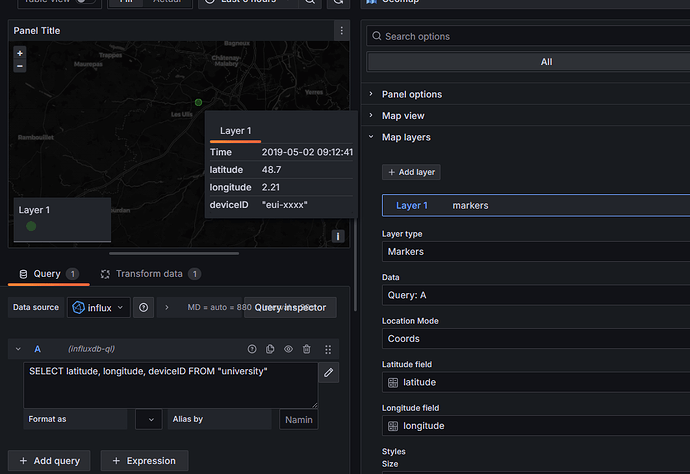I am trying to get Geomap to show markers for data that i have saved in a InfluxDb but I can’t get markers to show on the map.
Here is an extract of the CSV file I get from Influx:
Blockquote
Time,“position.latitude”,“position.longitude”
1709341104000,45.53124,-73.56343
1709341464000,45.83088,-73.60837
1709341824000,45.6789,-73.91201
1709342184000,45.69702,-73.93177
1709342544000,46.03001,-74.20713
1709342904000,45.65876,-73.85649
1709343264000,45.65907,-73.85757
1709343624000,46.11559,-74.56937
1709343984000,45.58284,-73.87479
1709344344000,45.8203,-74.04824
1709344704000,45.79109,-74.01807
1709345064000,45.73196,-75.05371
1709345424000,45.696,-73.61478
1709345784000,45.63686,-73.98493
1709346144000,45.76596,-74.01959
1709346504000,45.77335,-74.00211
1709346864000,45.73947,-74.13766
1709347224000,45.76998,-74.11947
1709347584000,45.76998,-74.11947
Blockquote
I tried changing the Location Mode and I have the “Select latitude/longitude fields” message showing if I select Coords Location mode even If I select both latitude and longitude fields OR If I select the Auto Mode I have the “Unable to find location fields”.
Can anyone give me some guidance what I am doing wrong ?

